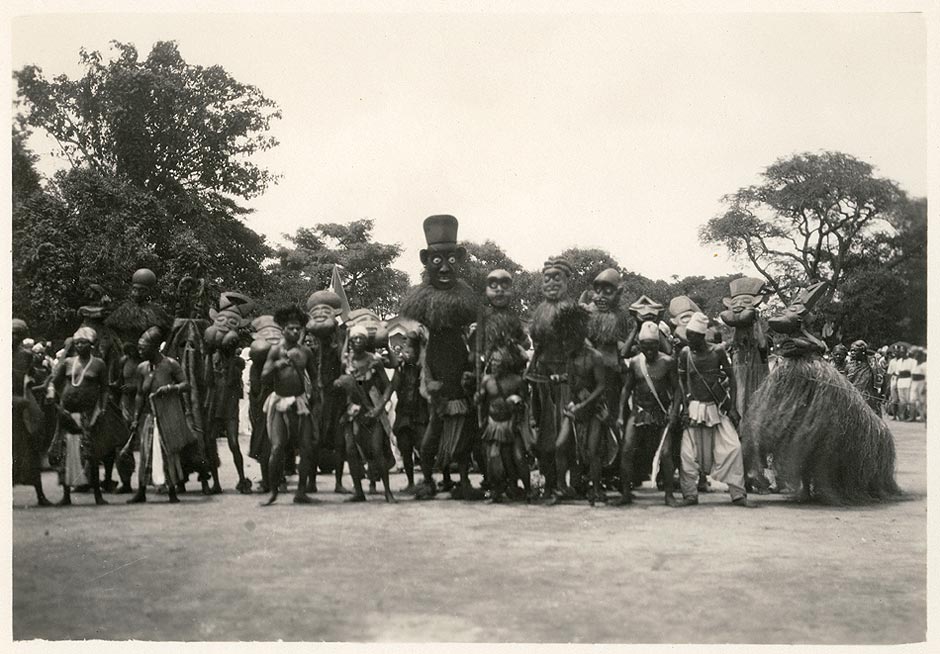Mask of the
kwifon secret society topped by a tarantula
Cameroon, Grassfields, northwest region, Fungom
Kuk. Early 20
th century
Wood, patina
Acquired from the ethnologist Hans Himmelheber in 1937; collected the same year
MEG Inv. ETHAF 019636-b
Geolocate the object
Les masques kuk de la société du kwifon, l’organe de justice, agissent comme des éléments des forces de police, sévères et impitoyables. Bien que travaillant en pratique pour le compte du souverain, les porteurs de masques sont si déterminés que ce dernier doit également se soumettre à leurs résolutions. Représentants de l’administration traditionnelle, véritables « agents de l’ordre», ils prononcent des jugements qui doivent être respectés de tous. La représentation de l'araignée terrestre ou mygale (Heteroscodra crassipes) sur nombre de ces masques est la métaphore de la puissance des esprits des ancêtres et de l’infaillibilité de la divination. En effet, l’araignée terrestre vit à la fois au-dessus du sol, dans le village, et sous terre, là où résident les ancêtres, dans son terrier (que l’on compare d’ailleurs parfois à une tombe). Elle a la capacité de médiation entre ces deux mondes et est en conséquence fréquemment utilisée dans les pratiques divinatoires pour déterminer la cause d’événements passés ou actuels, comme un décès ou une maladie.
En tant que masque, l’agent de l’ordre qu'est le membre du kwifonexerce sur les contrevenants («patients») à la loi l’autorité du roi et des institutions traditionnelles. Il en est le relais. Le symbolisme de l'araignée utilisée en divination suggère l’aspect impartial et légitime de son action.
The image above is subject to copyright.
Copyrights for Photographic Reproduction
Ressources
Cameroon Grassfields Map
The Kingdoms of the Cameroon Grassfields
In the west of present-day Cameroon, a highland region known as the Grasslands or Grassfields shelters numerous tiny states: the Bamenda cultural area in the north, the "Bamileke" kingdoms in the south and the Bamum kingdom in the east. Before the colonial era, these kingdoms vied with one another in prestige and riches as well as in art and architecture. The kings commissioned the best sculptors and bronze casters from the neighbouring regions.

Masks performance. Bamum Kingdom. Photo by Anna Wuhrmann, Foumban, around 1920. Gifted by Josette Debarge in 1932. © Archives MEG
The Bamum Kingdom during the Reign of King Njoya
The Bamum kingdom, founded in the seventeenth century, is the biggest of the tiny Grassfields states. The reign of King Njoya, which began in 1887, was a crucial transitional period. Over fifteen years, this little kingdom was upset by the arrival of Islam and reformed Christianity, German, British and French colonisation, their administrations and merchants. King Njoya invented an original writing system but also innovated in architecture, cartography and pharmacopoeia and instituted major reforms. Exiled by the French colonial administration, he died in Yaoundé in 1933 and is still celebrated as a hero throughout Africa.
Alexandra Loumpet Galitzine
